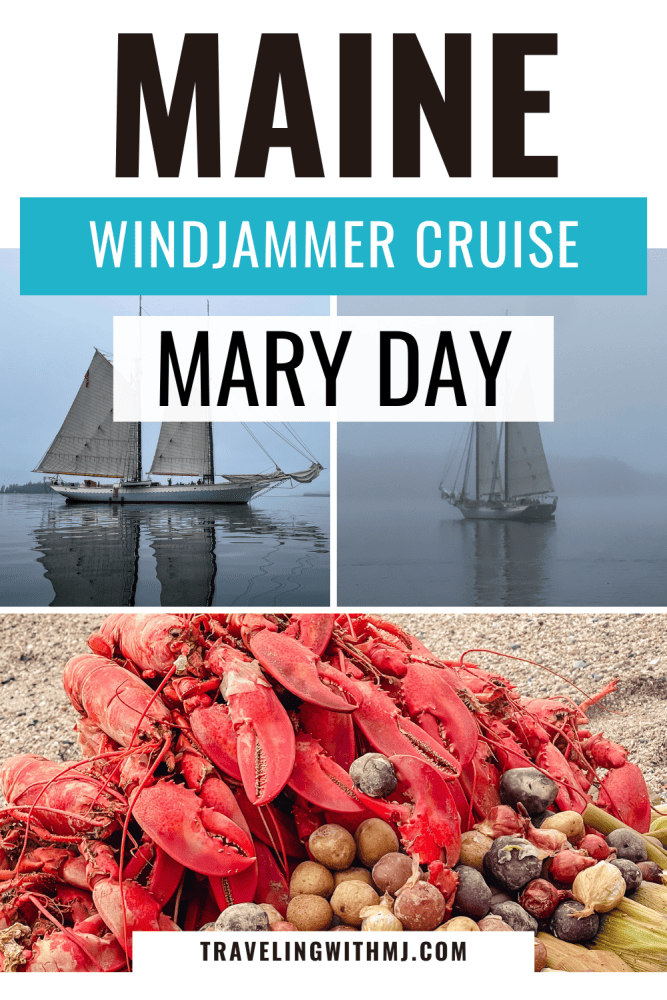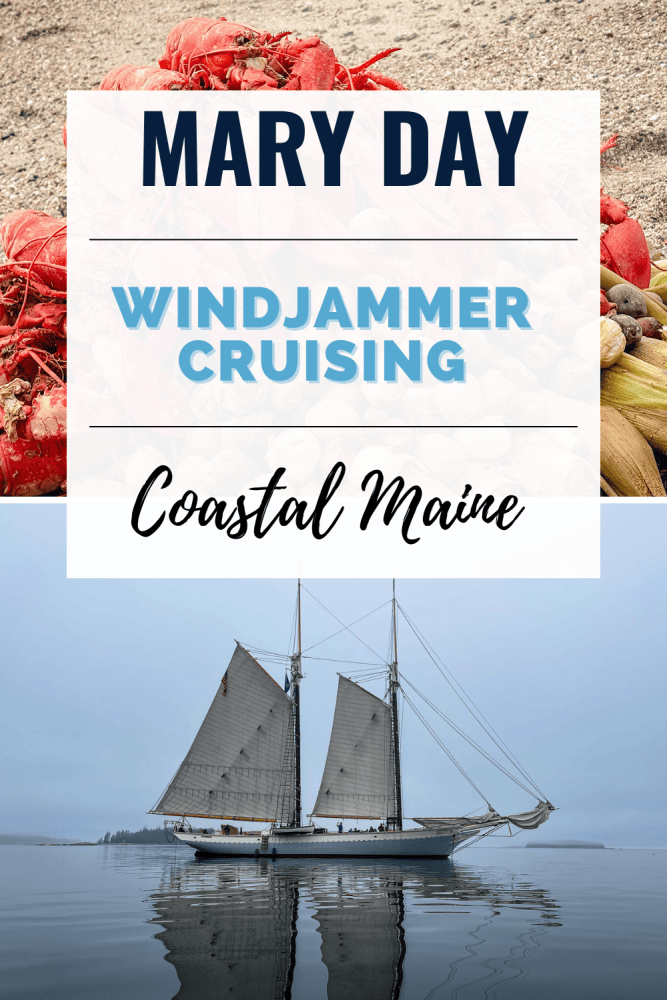During our first visit to Maine, we enjoyed a sail along the Maine coast on a Windjammer cruise on the schooner Mary Day. Sailing on a schooner is pretty hard to beat. Combine a sailing experience with a visit to a new state, and it becomes a grand summer adventure.
We’re going to tell you all about what a schooner is and why it’s so special. We’ll also share some fascinating history about schooner Mary Day and her current owners. And finally, we’ll tell you all about four days of sailing in coastal Maine on the Mary Day.
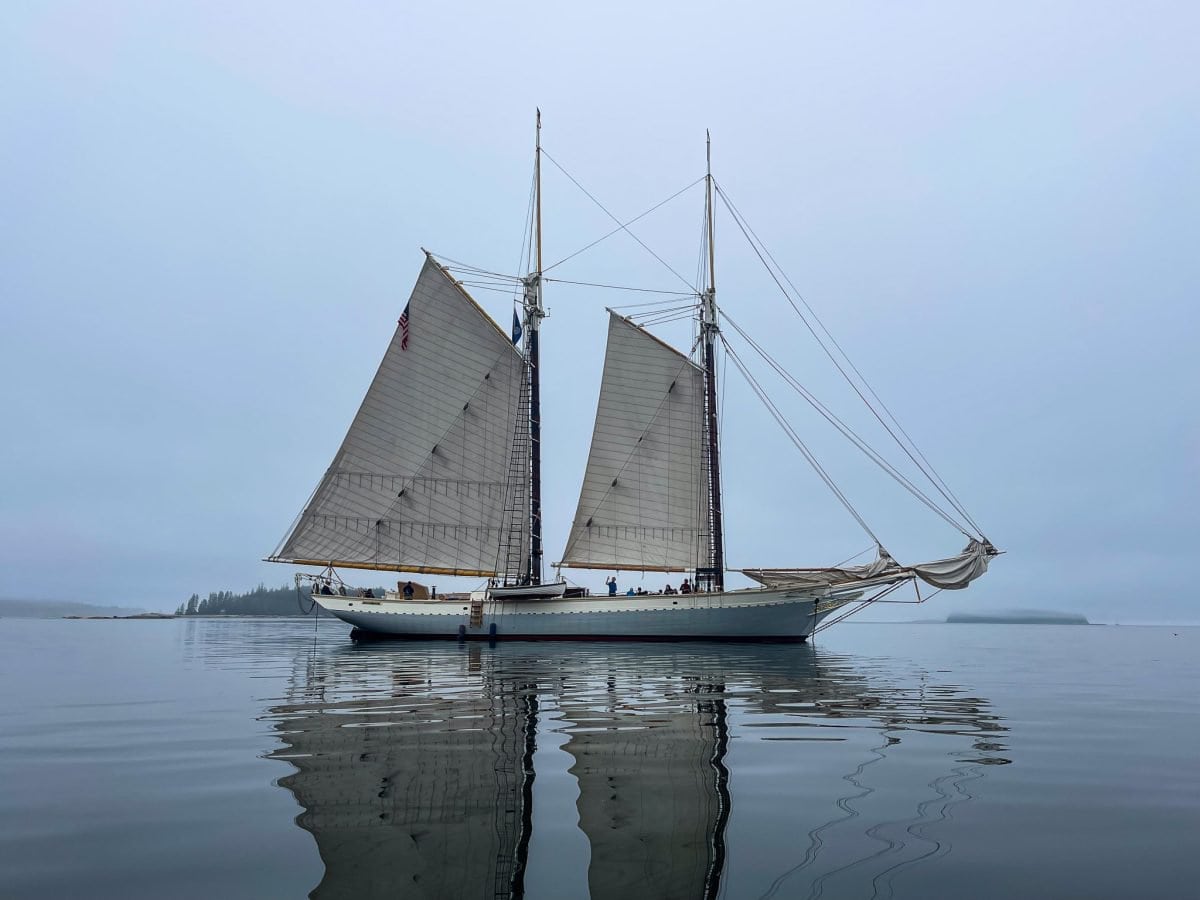
Let’s hoist the sail and get underway.
What is a Schooner?
A schooner is a type of yacht or sailing vessel that is distinguished from other sailing craft by its rig – the set-up and the arrangement of the vessel’s components onboard. Most importantly, are the masts and sails.
Schooners have two or more masts with both fore and aft sails. In addition to these two main sails (they’re the largest), a schooner may have a few additional smaller sails that are rigged to the foremast. Most commonly, this may be one or more square topsail or a jib or Bermuda sail (triangular-shaped sails that extend forward toward the jib boom). It’s the combination of all of these sails that makes for the unique rig of the schooner. The specific arrangement of all these different types of sails, however, can differ from one schooner to the next.
The Schooner Mary Day
Schooner Mary Day is a 90-foot vessel, and with two masts, the highest of which reaches 100 feet. She’s regularly docked in Camden, Maine, and a cruise on Mary Day will take you along the coast of Maine, enjoying the scenery and exploring hidden treasures along the way. Some itineraries are scheduled out, others are cruises that take you where the wind blows (literally and figuratively).
It’s not necessarily the specifics of her rigging that make the Mary Day an iconic yacht, however – it’s her history and her legacy.
The Mary Day has 18 cabins, accommodating 28 passengers, along with seven crew, and is part of the Maine Windjammer Association.
The History of Schooner Mary Day
Mary Day was launched in January 1962 after construction in South Bristol, Maine, about an hour from her birthing point in Camden today. The vessel was named after the wife of her designer and first captain, Havilah Hawkins Sr. He owned the yacht for about two decades. You can read more about that history here.
One thing that makes Mary Day stand out from other similar vessels of her time is that she was the first schooner built for recreational sailing. She was designed to carry passengers, not just cargo, and the design of the passenger areas reflects that. It took six months and six men to build the craft, and the result is impressive.
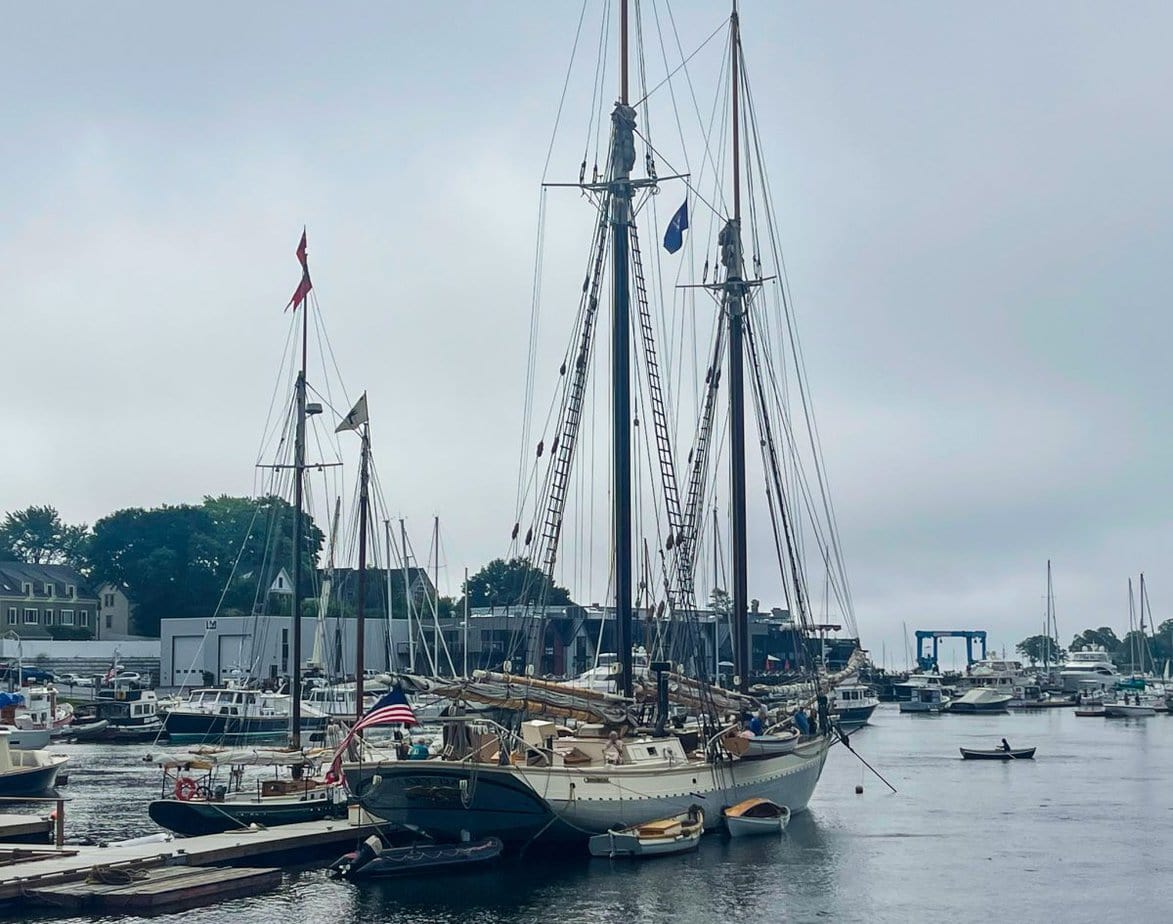
The design of Mary Day is a culmination of boats previously owned by Hawkins. While the decor is reminiscent of the 20th century, after a rebuild and relaunch in the early 2000s, she now features all the modern technology and equipment.
Mary Day Owners
The Mary Day is owned by Barry King and his wife Jennifer Martin, both of whom are seasoned sailors. Jennifer and Barry met through a mutual interest in conservation and the natural environment, and they settled in Camden, Maine, where the schooner is birthed. Barry’s relationship with the schooner dates back to 1993 when he worked on it under a previous owner.
The two were married onboard the Mary Day, purchasing it three years later.
What It’s Like to Sail Onboard the Schooner Mary Day
When you’re sailing onboard schooner Mary Day, your time is your own – you can laze on the deck and soak up the sun, enjoy the scenery of coastal Maine, dig into a good book, learn about sailing and navigation from crew members, try your hand at sailing, and head to shore as docking or tendering allows.
There’s an open deck, rudimentary cabins, and a dining saloon with a wood stove used in the galley for cooking. There are two toilets (heads in sailing-speak), both accessed from the deck. One of the heads has a self-contained shower. – you seal everything up and turn on the spray. Additionally, there’s a water source for hosing off after swimming.
Sailing time is unstructured time. There’s no schedule of events, other than meal times. Our time on the water in mid-July was marked by foggy and cool weather. We spent our days enjoying the scenery – the bays and coves in Maine are impressive – sitting on the deck reading, chatting with the crew and hearing their stories, exploring the small towns when we anchored near land and napping. We lent a helping hand to raise and take down the sails, learned a little bit about sea life, and turned our faces toward the sun. That sea air did two things – built up an appetite and made me sleepy.
If it’s authentic sailing you’re after – in contrast to being on a cruise ship – the Mary Day may be just what you’re looking for.
The Itinerary: Sailing in Coastal Maine
The Mary Day sails from Camden, the heart of coast Maine along Penobscot Bay. Fun fact: Pulitzer Prize winner Edna St. Vincent Millay was a native of Camden. Other small towns in the area include Rockport and Lincolnville.
Coastal Maine is renowned for being an outstanding location for sailing. With 3,500 miles of coastline, it’s not surprising that the gorgeous long, sandy beaches and quaint little seaside towns attract sailors.
There’s no particular itinerary or specific destination. Although Captain Barry does have some favorite sites and spots, most of the days are spent sailing with the winds and the tides took us. Unlike large cruise ships, windjammers sail by day and anchor out at night. Although we rowed to shore (well, someone else did the rowing) on a few spots, the highlight of this cruise is being out on the water.
While most of the cruises have no itinerary, there are a few with specific themes for those who want a little more structure.
The Cabin
Cabins on the Mary Day include doubles, twin bunk beds, and singles. They’re small – it’s a sailing ship after all. There are no en suite bathrooms, televisions, entertainment centers, or phones (and cell reception will be spotty). Again, this is unplugged, adventure sailing.
We had a double cabin that had a double bed as an upper berth and a lower single bed for luggage storage. The cabin has a small sink and mirror, a towel rack (towels are provided), and a little storage area. A small window and hatch above the bed provided ventilation. Headspace in the upper birth is fairly low, but there’s a USB plug-in and reading light, making it cozy.
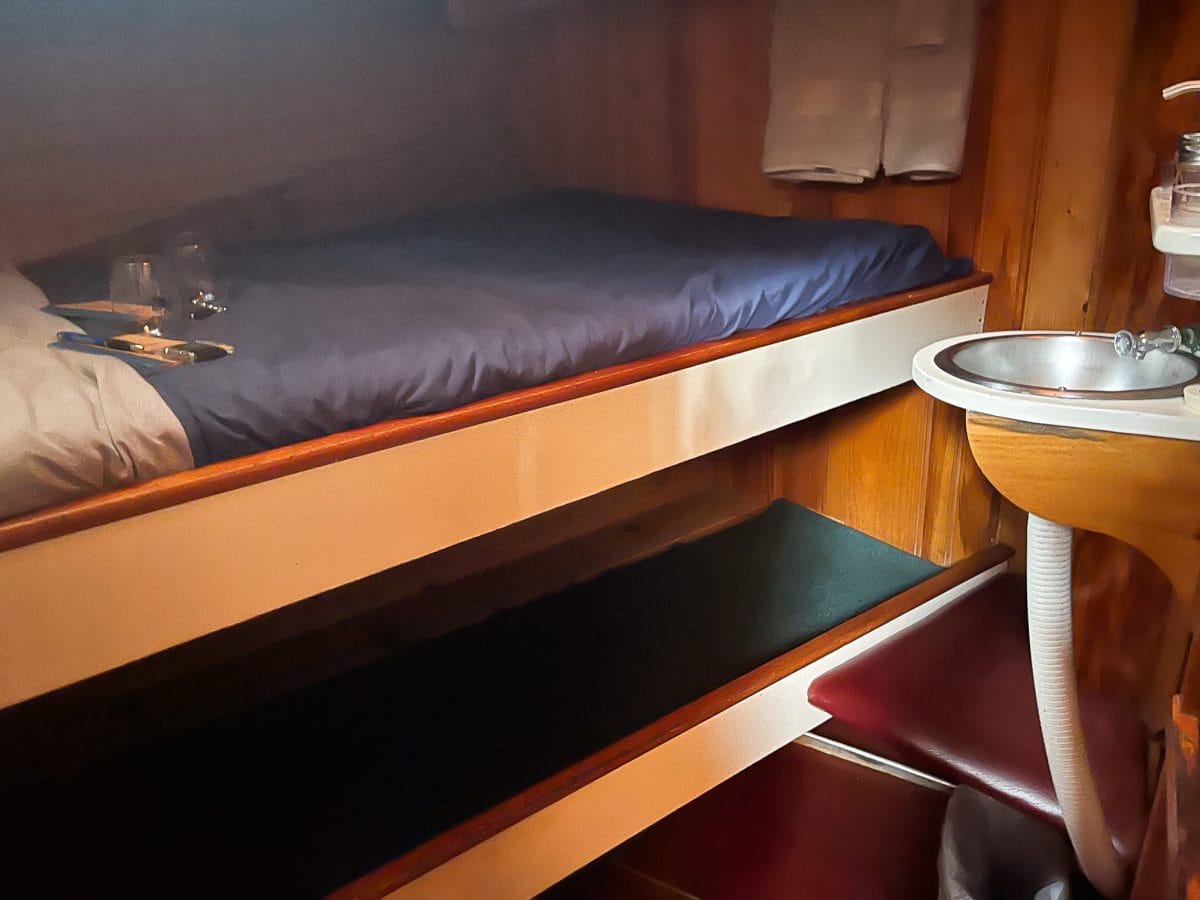
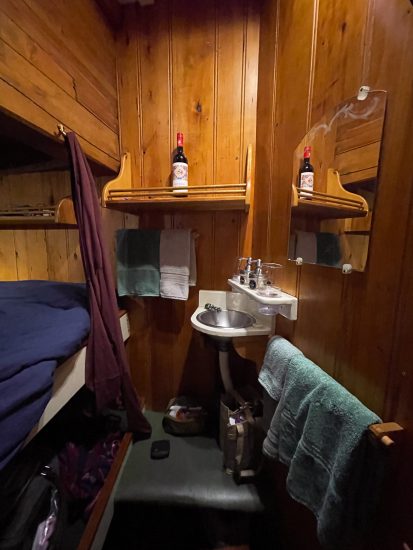
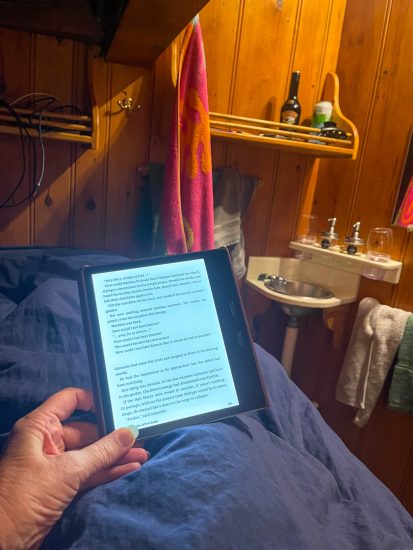
I had no problem sleeping every night, enjoying the lapping of the waves against the side of the ship. If you’re a light sleeper, bring earplugs. The cabins aren’t soundproofed and you’ll hear conversations, people walking about, and perhaps your next-door neighbor snoring. It’s most noticeable when everyone is preparing for bed, but wasn’t something that kept me awake. You may want to refrain from any super private discussions, though.
The Food
Breakfast and dinner are served family style in the main saloon. Lunch is served buffet style and you can find a spot to sit in the saloon or opt to dine al fresco on the deck.
Meals were simple and tasty, nothing fussy that would turn off a picky eater. Egg dishes. pancakes, and meats for breakfast. Sandwiches, soups, and salads for lunch. And a main meat course with sides and dessert for dinner. Coffee and snacks were pretty much always available.

The dinner highlight, however, was the lobster bake The crew took everything ashore to a secluded beach and cooked up a traditional all-you-can-eat lobster bake. For a traditional lobster bake, the lobster is steamed in a pot with seaweed and an assortment of vegetables, seasonings, and occasionally, other meats or seafood. It is often done over a fire on a beach or backyard but can be recreated on a stove. It’s a one-pot meal, making it seem easy.
Our bake included lobsters, several types of potatoes, ears of corn, and onions. We sat on towels in the sand and ate to our hearts’ content. As the plate got low, more lobster was passed about. The food was delicious, but it was just as much about the setting, eating with your hands, and kicking back on the beach. I’ll be trying to recreate this lobster picnic at home come summer.
The ship is BYOB (bring your own bottle), and ice chests are available on deck to keep things cold. We picked up some local beer to throw on ice and a bottle of red wine that we kept in our cabin.
What to pack
Pack light!
You’re not going to need multiple outfits or dressy clothes. Leave all – or most – of your electronics at home (there’s no wifi on the ship). And there’s not a ton of storage space on the ship. We each packed a duffle bag and had plenty of room to pack what we needed, along with a couple of bottles of wine.
We lived in short during the day, changing to jeans or leggings when the evenings cooled things down. A couple of t-shirts, a sweatshirt or sweater, and a light windbreaker (I took this one from LL Bean), and you’re good to go. I do recommend two pairs of shoes, both with non-slip soles, just in case one gets wet. I wore these from Vessi and packed these from Keen for beach walking and when it might be wet.
You’ll also want to pack your usual toiletries, along with sunscreen and bug spray (if you’re sensitive to those nighttime mosquitos). I also recommend packing some wet wipes. You can limp along with a modified sponge bath for a couple of days.
The Price
A quick look at pricing on the 2024 schedule, 4-day sailings with no set itinerary are priced at $1265. Sailing begins in early June and runs through September. Take a look at the various sailing rates and dates here.
On our last night onboard, passengers passed an envelope for crew gratuities. This is a great time to be generous toward the crew that’s taken care of you.
Is a Windjammer cruise right for you?
We believe that there’s a cruise for everyone, it’s just a matter of matching up your preferences for size and type of ship, onboard features and amenities, and itineraries. I love all types of cruises, having some favorites of course, but I know that you might not.
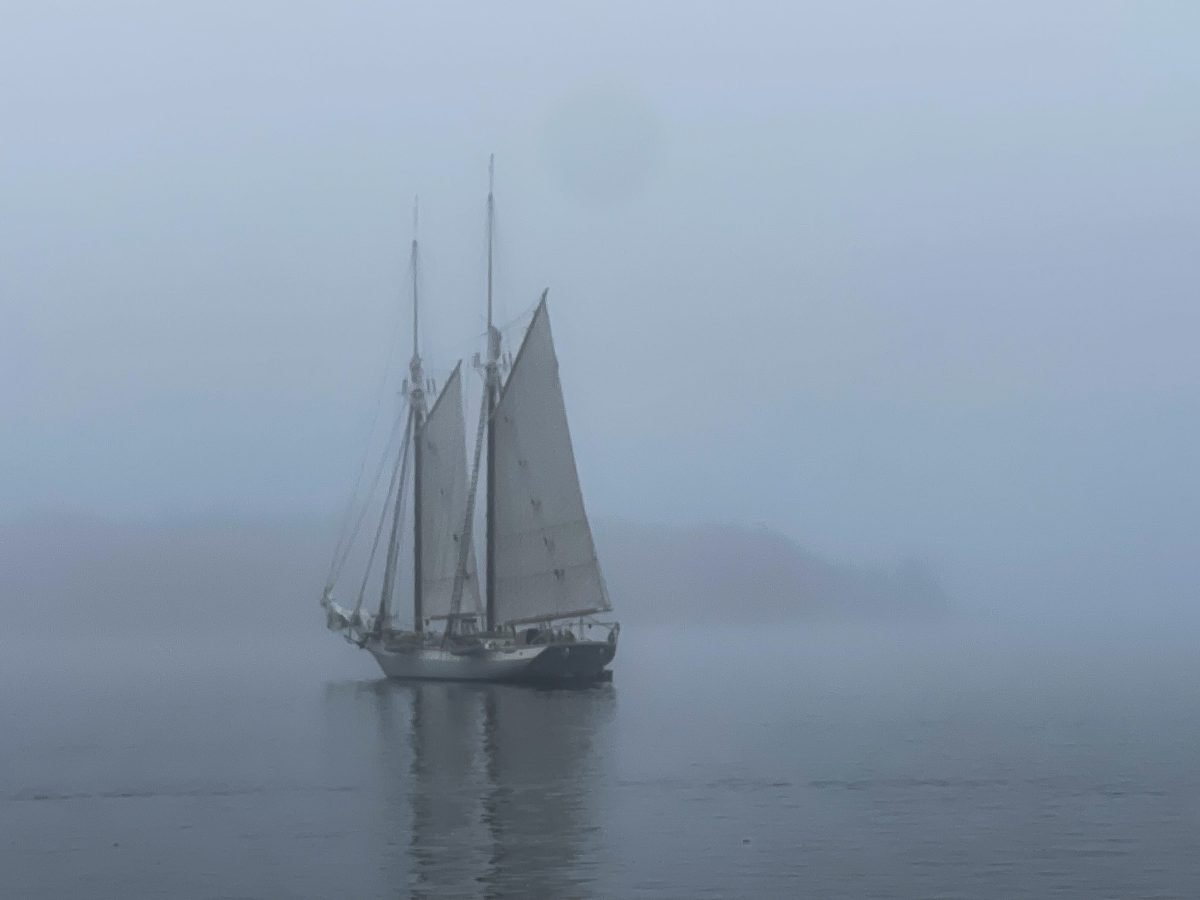
A windjammer cruise is casual travel. It’s a chance to kick back, enjoy the wind on your face and in your hair, meet new friends, and disconnect from all the gadgets that keep you tethered. I thought it was a little like camping on the water, with better food and someone to take care of getting you where you need to go. It’s not roughing it, it’s just, well — sailing.
If you need theatrical performances, luxury suites, casinos, and formal nights, this is not the right choice for you.
Getting there
You’ll set sail from Camden, Maine, located about 80 miles northeast of Portland and 43 miles from Bangor.
We flew into Portland and rented a car for the trip to Camden. There is a lot for parking the car while sailing. We enjoyed having a car as we did some other sightseeing, and we got a rate that made it comparable in price to arranging for a shuttle.
There are various bus and shuttle services from both Portland and Bangor that will get you close. You will need a taxi or ride share from the drop off point.
For Pinterest
Save to your favorite Pinterest board and plan a windjammer sailing vacation!
